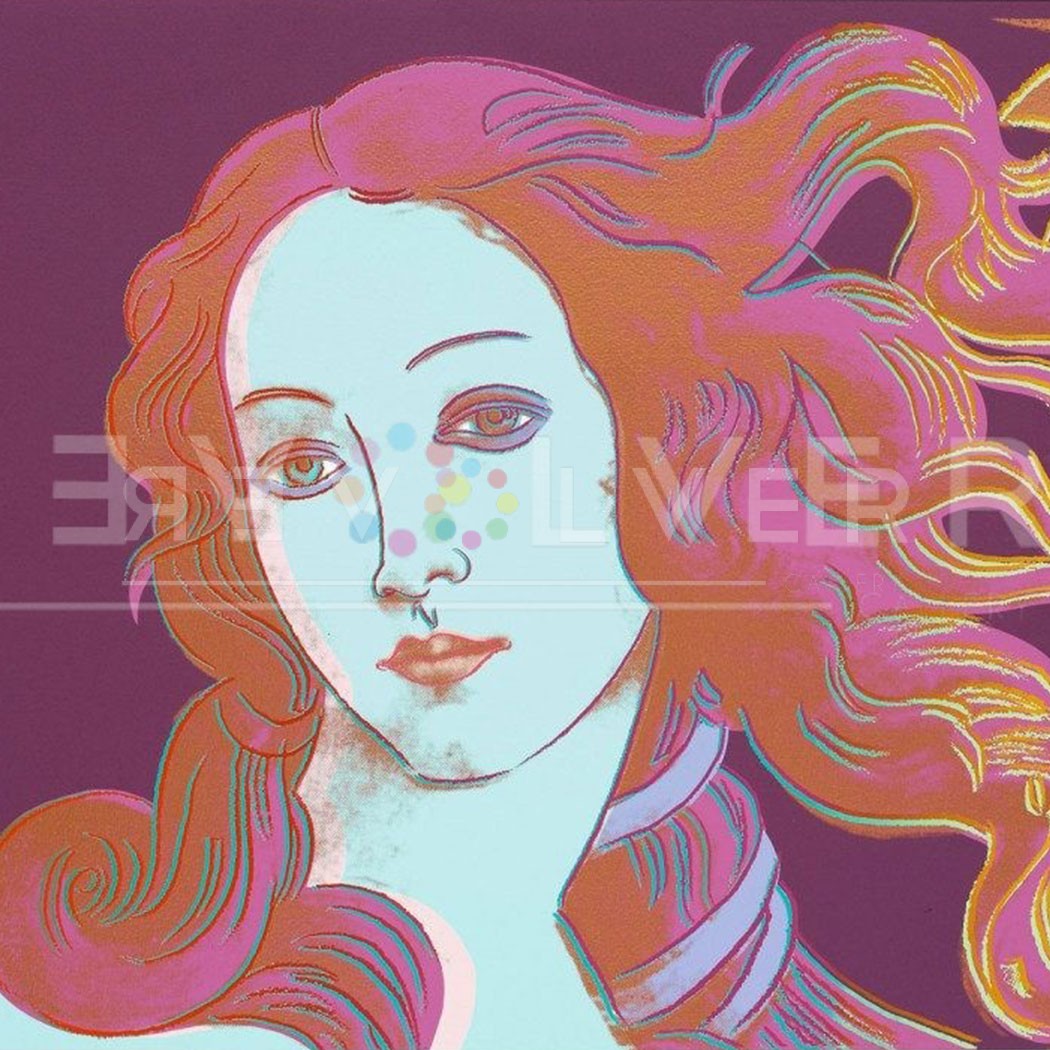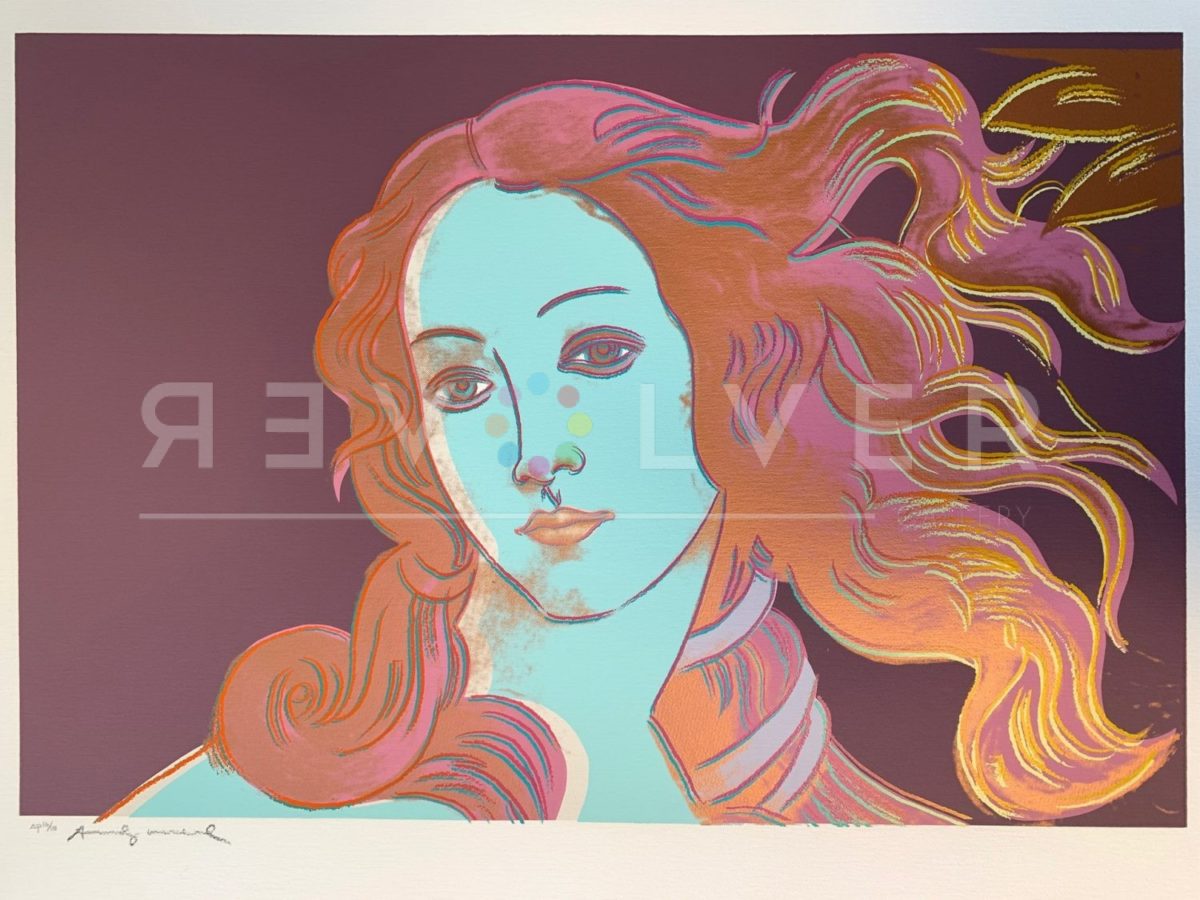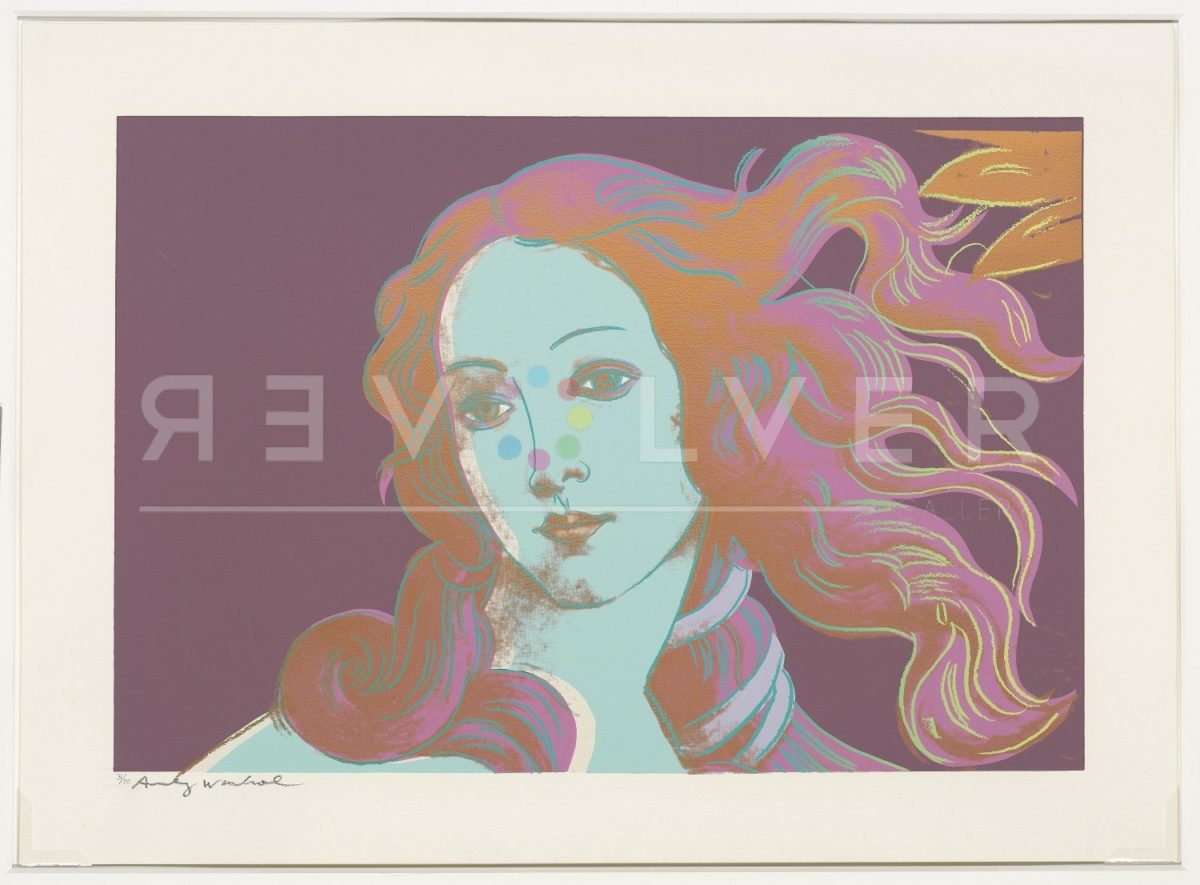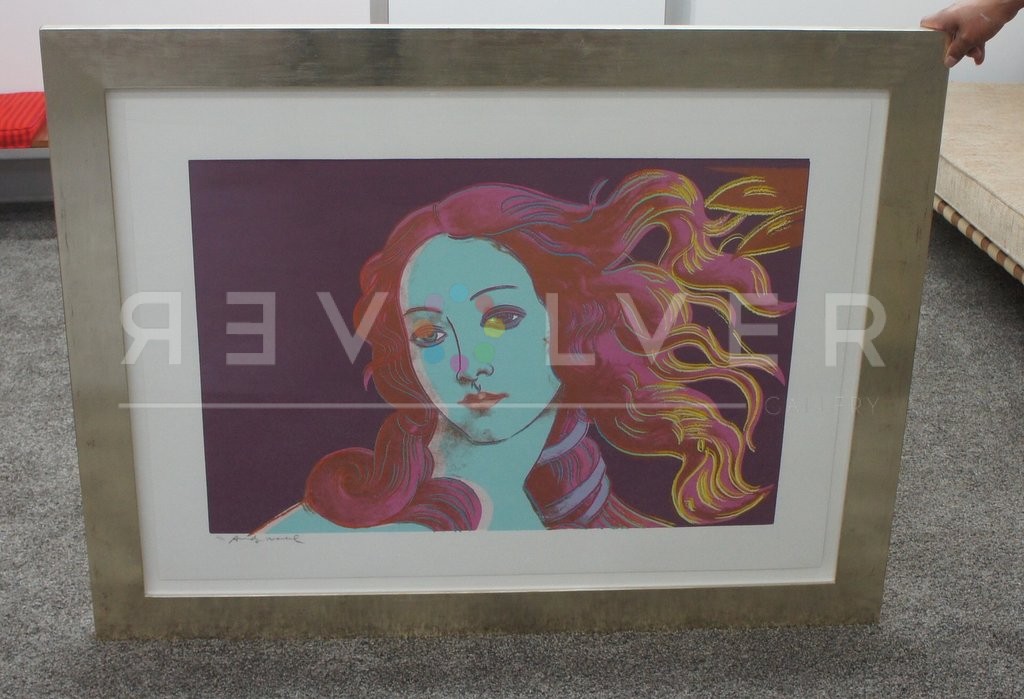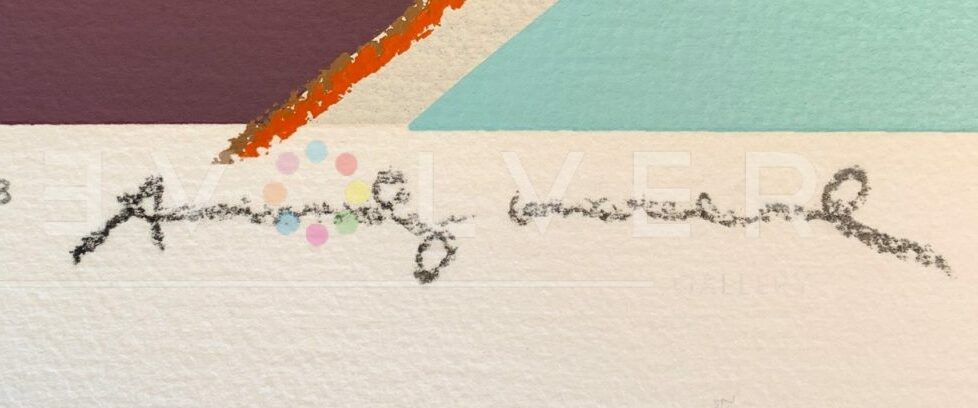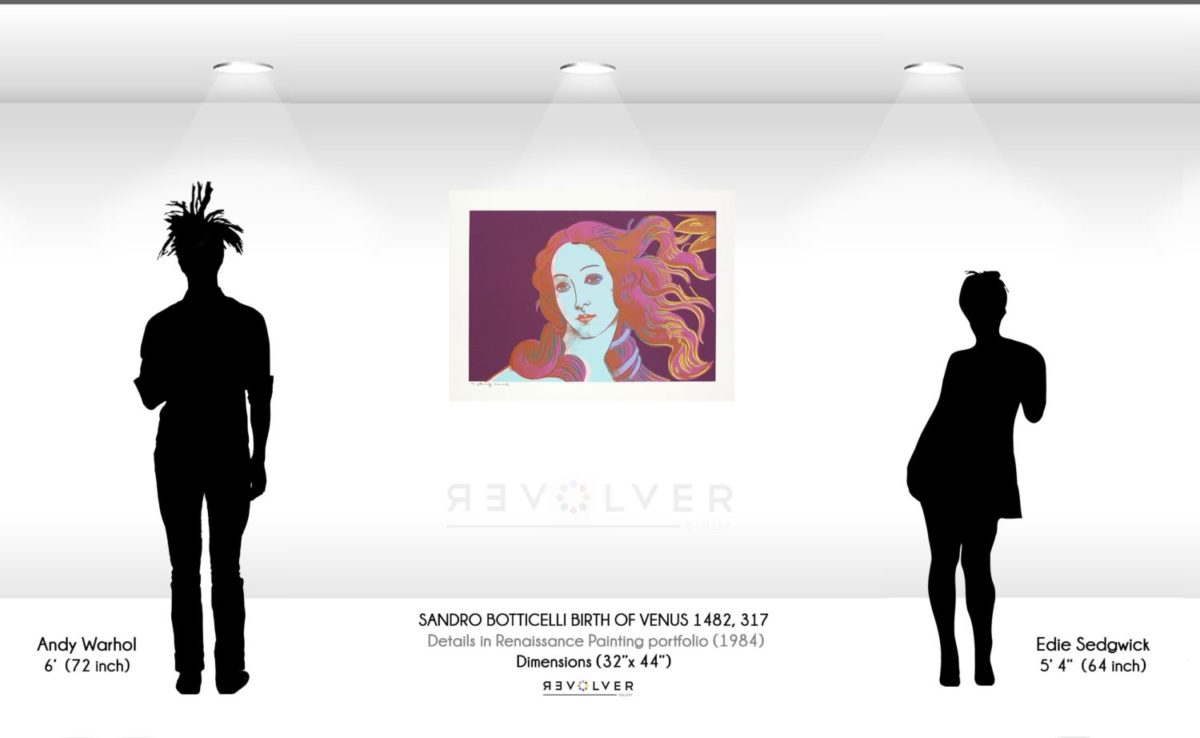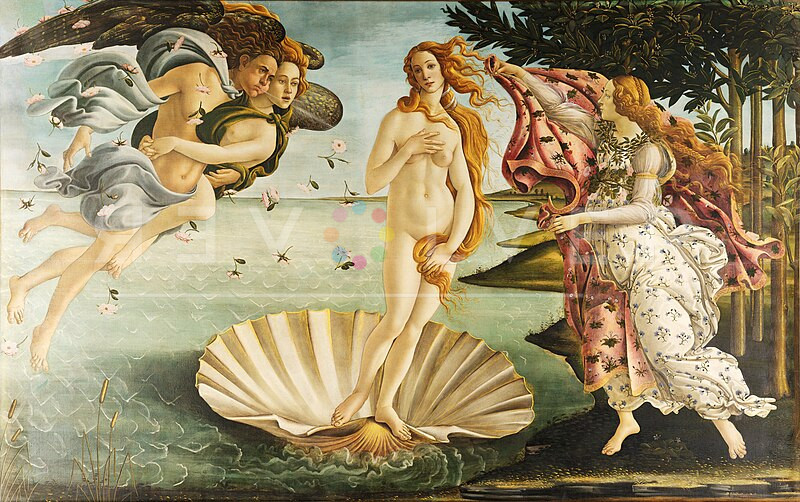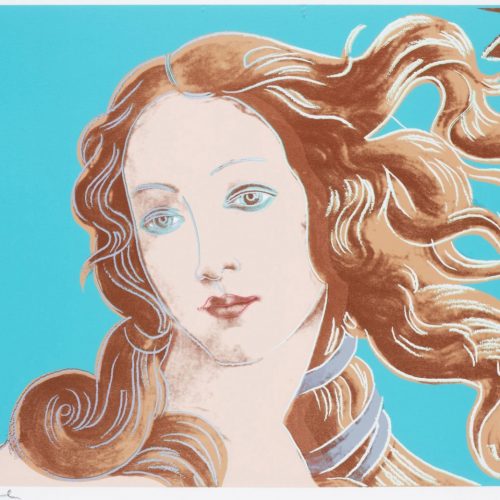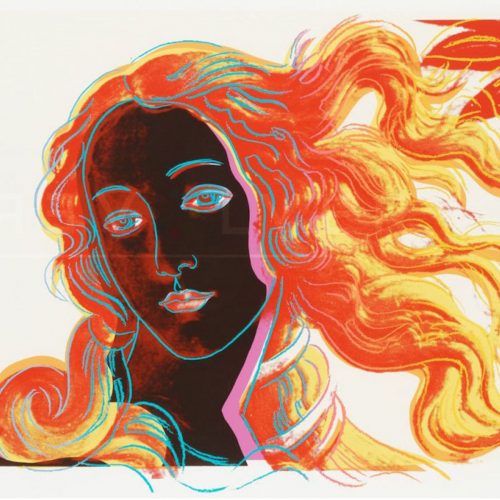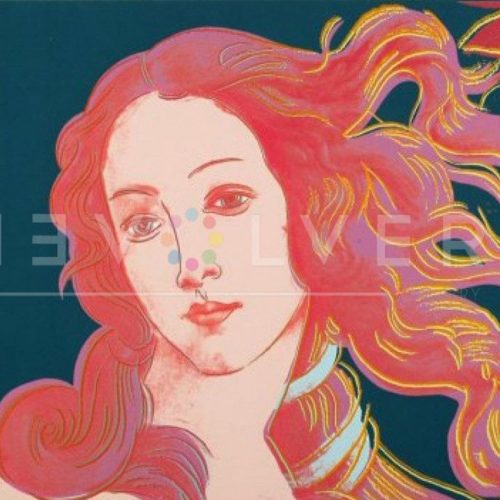Birth of Venus 317 is a screenprint by Andy Warhol from his Details of the Renaissance: Birth of Venus portfolio, from 1984. The series is a reinterpretation of Sandro Botticelli’s painting of the goddess Venus. Warhol created four of these Birth of Venus prints, all of which feature the Roman goddess of love. In these works, Warhol highlights Venus’s divine beauty, by zooming in on her face and flowing hair. Sandro Botticelli’s Birth of Venus is one of the most famous Renaissance paintings, which heavily inspired Warhol.
For Warhol’s Birth of Venus series, he created four screenprints of the goddess’s face, each of which have their own vibrant color pallet. Warhol left the background plain, allowing her portrait to pop. In Birth of Venus 317, Venus is shown with flowing hair of fiery orange, against a dark green backdrop. Her calm facial features contrast with the vibrant composition, creating a placid work.
Warhol first became fascinated by Renaissance paintings after attending The Mona Lisa’s first exhibition in New York in 1963. Later that year, he created Thirty Are Better Than One, where Mona Lisa’s face is repeated 30 times. Warhol revisited the idea of mass producing Renaissance portraits in the 1980s to create the Details of the Renaissance series. Warhol’s Birth of Venus series is not his only foray into the Renaissance era. In the 1980’s, Warhol became fascinated with the master artists of the past, and created many renditions of their works. Besides Botticelli, Warhol created prints inspired by artists such as Leonardo da Vinci and Piero Della Francesca. Other works from the enigmatic collection include Saint Apollonia, The Annunciation, and Brera Madonna.
Warhol saw great financial and critical success in the 1980s, partly due to his affiliations with younger artists, such as Jean-Michel Basquiat. It was a very prolific period for him, ended only by his death in 1987. During the decade, he produced significant works like Ten Portraits of Jews, and Cowboys and Indians. Notably, one can see Warhol’s increased use of the collage style during this period—evident in Reigning Queens, Wayne Gretzky, and Karen Kain—which began to take shape in the 1970s with works like Mick Jagger and Skull 158.
Despite all of its praise, Warhol expressed disillusionment with Birth of Venus. He spoke of the process in his diaries: “The Details. I hate them. Like details of the Botticelli ‘Venus.’ But people are loving these best. It makes you wonder.” In the end, Birth of Venus 316 is a quintessential Warholian project. He alienates Venus from her original context, and relocates her in order to start anew. It is the ultimate Pop Art maneuver; an attempt to re-enchant what has grown too familiar.
Warhol’s appropriation of such a sacred image of the arts was surely open to criticism. Regardless, inducting the work into the Pop Art genre only reinforced Warhol’s attitude that all things can be commodified; that art is for the masses, not just the elite few.
Photo credit: Sandro Botticelli, The Birth of Venus (c. 1484–1486). Tempera on canvas. 172.5 cm × 278.9 cm (67.9 in × 109.6 in). Uffizi, Florence

